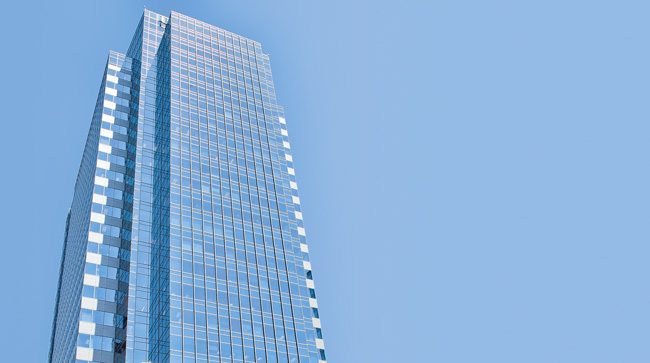 |
 |
 |
Too many cooks in the kitchen can spoil a soup, but with the right mix of experience, demand and legal advice, mixed-use developments can turn into a wildly successful, complementary group of projects.
Mixed-use developments are on the rise in Phoenix Metro as office buildings see the benefit of offering employees a place to work, shop, eat and seek entertainment in thriving community environments. To get one off the ground, though, requires a lot of collaboration and the clearing of many potential legal hurdles.
“The homeowner, the office tenant, the shopkeeper and the restaurant owner – each have concerns involving the layout, structure, location and function generally, including issues dealing with hours of operation, access (both pedestrian and vehicular), noise, security, costs, landscaping, utilities, insurance and so forth,” says James Connor, shareholder at Gallagher & Kennedy, P.A. “The various interests of the users may not always be aligned, and in fact, often may be in conflict.
“Creating the fundamental governing and controlling development agreements to serve all interests of the various users, while not undermining the value as an investment nor impeding the ability to obtain financing, is challenging,” Connor adds. “These agreements must deal with not only the development and construction periods, but of course, the indefinite life of the project for decades (if not longer) in duration.”
While drafting agreements that make everyone happy (enough) is key to the success of a mixed-use development. The financing is perhaps one of the biggest non-starters.
“Because most developers have a goal of selling the project upon realization of stabilized cash flow, care must be provided to allow for each component to be able to be defined and conveyed, in order to market parcels to the strategic investors,” Connor says. “Put another way, a REIT which invests solely in office projects will have little appetite to acquire a parcel which includes retail, residential or other uses.”
Experts note that mixed-use projects are increasingly a response to less available land for new development in dense metropolitan areas.
“What makes a given mixed-use project unique depends to a significant extent on whether you are dealing with a ‘vertical’ or a ‘horizontal’ mixed-use project, and whether the project is being developed by a single developer or multiple developers,” says Mike Ripp, an attorney at Ryley Carlock & Applewhite.
Vertical projects, he says, are the most complicated type of mixed-use development.
“The uses are more physically interdependent on each other and that components on the lower floors may need to be in use before the upper floors are complete,” he says.
“The reason these projects are becoming more popular is because people like to live, work and play all in the same area. People like having access to these types of things,” says Nussbaum, Gillis & Dinner attorney Howard Weiss.
From a consumer standpoint, mixed-use developments make life easier. That said, it’s a long journey to the “parcelization scheme” that will grab investors, developers and tenants.
“As mixed-use projects become more prevalent nationally, it is likely that standard ways of handling the more common mixed-use project issues will evolve and gain acceptance,” says Ripp.
“Some lenders find mixed-use projects difficult to evaluate because of the lack of real comparables,” Ripp says, adding that underwriting the many components of development and being able to judge whether a developer has sufficient experience all the product types are also of concern to lenders.
Every single use at CityScape was financed independently of the others. It built a hotel, occupied it and then built apartments above. Instead of phases expanding horizontally, CityScape expanded vertically.
“The idea of having to vertically finance the phasing of a mixed-use project has been one of the most complicated things we’ve had to do here,” says Jeff Moloznik, general manager of CityScape. “That part of it was far and away one of the most interesting and intricate elements of what happened,” says Moloznik of the design and engineering work as well as the financing of the CityScape phases, which happened over a seven-year span.
Additionally, Weiss points out, discrepancy between parking ratios for the different components can sometimes occur. Another issue, he says, comes to leasing. As a tenant, he says, you may not have as much control over eliminating competition — for instance, being the only sub shop in the complex. Operating expenses, too, are important to define for the respective uses.
The expenses for elevators, cleaning and janitorial services or security are not always shared by all the tenants in a mixed-use development, he adds, citing the vertical and disjointed CityScape as an example.
“There’s always an issue with the allocation of these expenses,” says Weiss.
It is easier, he says, for projects such as Kierland or Scottsdale Waterfront, which have different components in different buildings — spread horizontally. “In that type, from a legal perspective, you’ll deal with reciprocal easement (REAs) and operational agreements,” says Weiss.
That means that during development, if different components are owned or developed by separate companies, they can sign an agreement that allows for the most beneficial coexistence through contractual obligation.
“There are a lot of commercial leases out there, but at the end of the day a landlord wants a lease that specifically works with their project,” says Weiss. “Because each one has a unique component, and depending on the developer, I would say this would be handled more on a case by case basis.”




